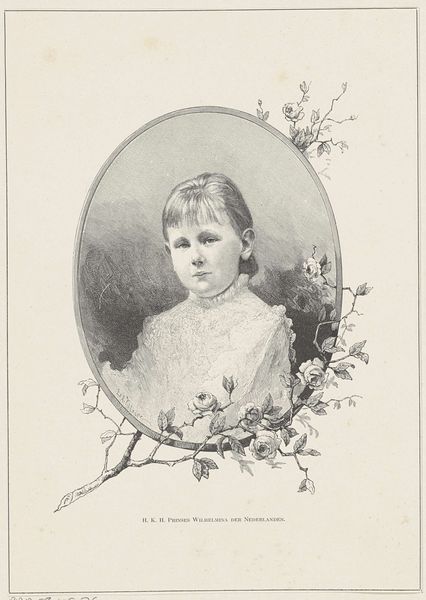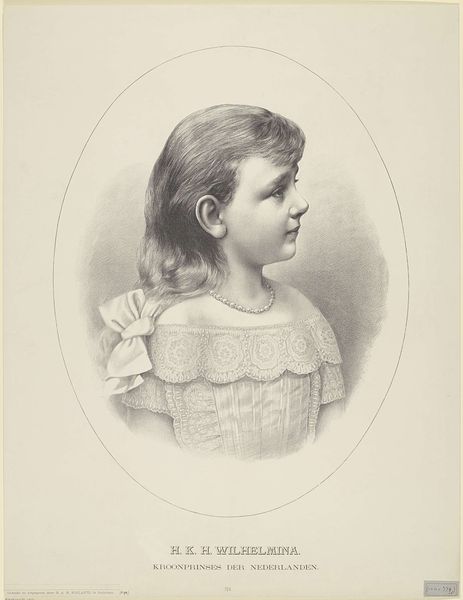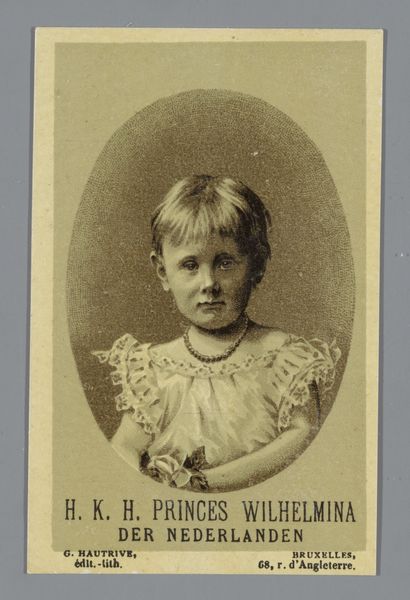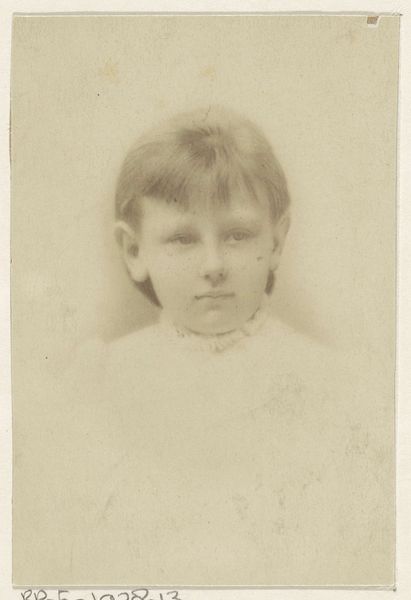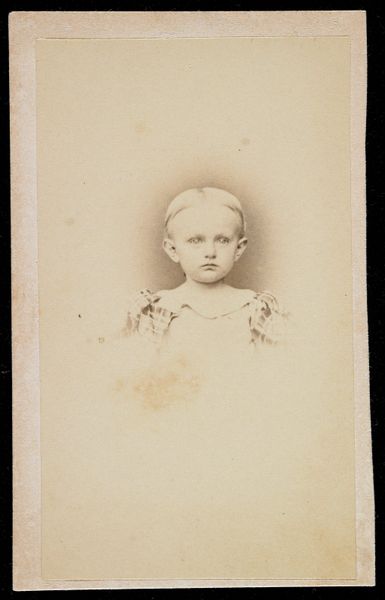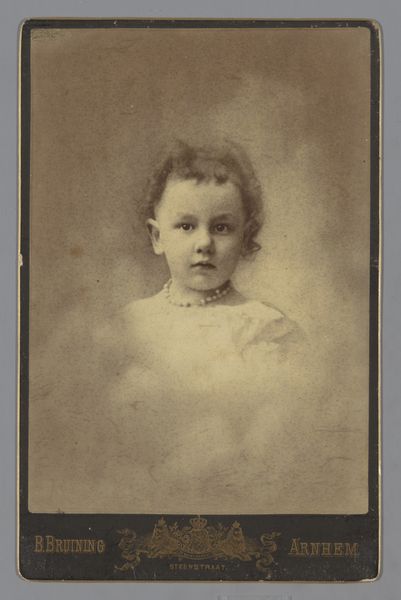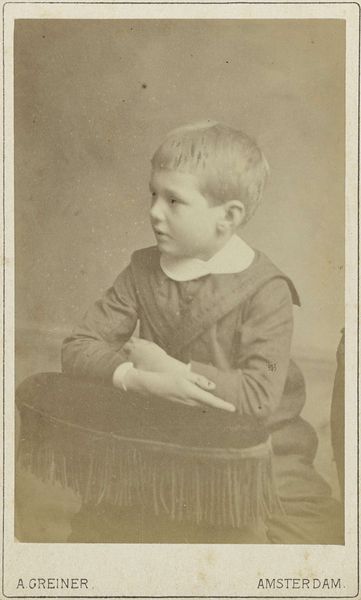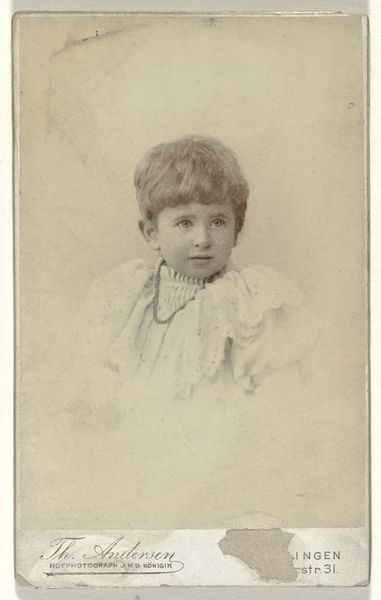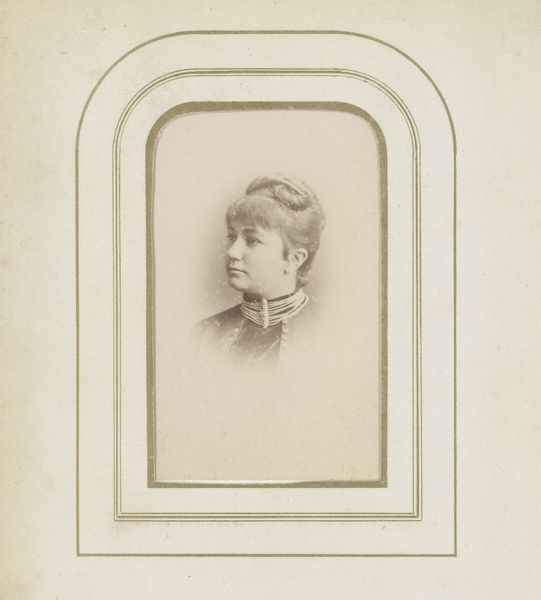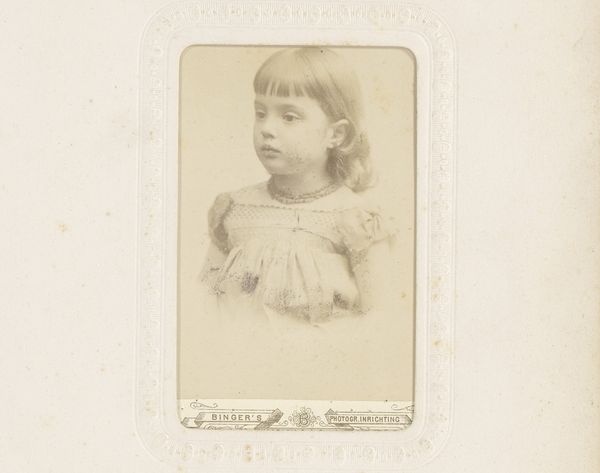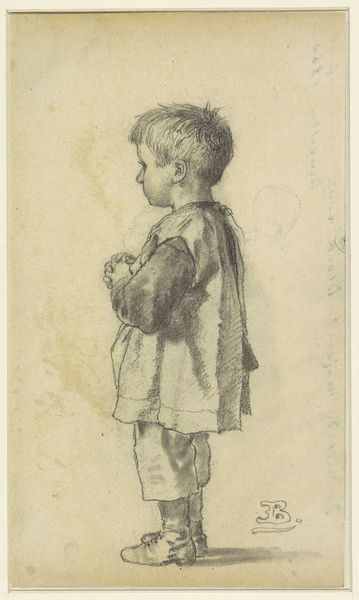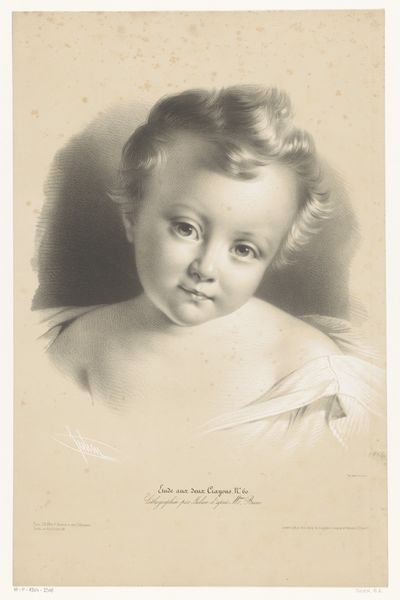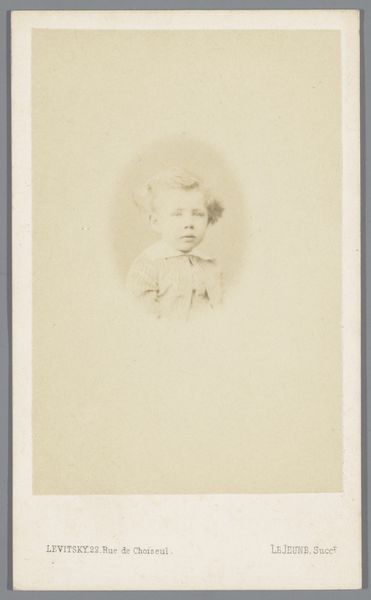
drawing, pencil
#
pencil drawn
#
drawing
#
pencil sketch
#
pencil drawing
#
pencil
#
realism
Dimensions: height 260 mm, width 188 mm
Copyright: Rijks Museum: Open Domain
Editor: This portrait of Wilhelmina, Queen of the Netherlands, is a pencil drawing that could have been made anytime between 1882 and 1949. It’s incredibly detailed, almost photographic, yet softened by the medium. The subject's gaze is very direct, while the encircling floral embellishments and youthful beauty contrast sharply with an old-soul sense of regal responsibility, but also of inherent innocence, maybe because it portrays a young Wilhelmina. What do you see in this piece? Curator: Beyond a simple portrait, I see a layering of symbolic imagery deeply intertwined with notions of monarchy and childhood. Consider the rose—a potent symbol of love, beauty, and perhaps in this context, the blossoming potential of a future queen. The lilies-of-the-valley are traditionally associated with humility, purity and faith, maybe suggesting this will be a queen that abides by faith. And notice the pearl necklace; its circular form evokes eternity and wholeness, suggestive of a legacy intended to endure. Are these elements placed here randomly or are they strategic reinforcements of perceived ideal royal virtues? Editor: So, you are saying each element tells part of a symbolic story that projects regal destiny? I was struck by how stern the girl seems, almost as if aware of her role and fate, yet you are more focused on what surrounds her rather than what seems immediately evident to me. Curator: Indeed. What appears as solemnity can be understood as the weight of expectations, magnified by these very carefully chosen, culturally loaded symbols. Perhaps the stern gaze, rather than being read solely as foreknowledge of destiny, is instead an almost naive representation, guided by how a ruler, even a very young one, is expected to come across in official imagery. I think the roses and lilies may indeed be intentional indicators. Does that consideration shift how we view the piece and what aspects are amplified now? Editor: I suppose viewing each element of the composition like individual pieces in a puzzle really deepens my understanding of portraiture. It suggests hidden narratives and reveals aspects of how a nation seeks to shape perception around the ruler. This makes me look at portraits completely differently, thinking more critically about symbolism!
Comments
No comments
Be the first to comment and join the conversation on the ultimate creative platform.
